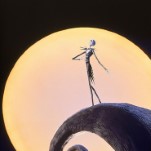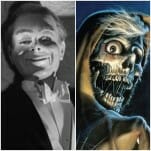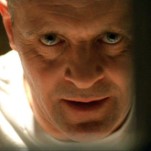On Richard Pryor: Hilton Als, White Girls and the Greatest American Comedian
Hilton Als is the theater critic for The New Yorker, and his 2013 collection of essays White Girls is one of the most provocative and original books on race, gender, culture, celebrity and art published in recent years. The pieces in the book blur all sorts of lines between fiction and nonfiction, the public and private, the female and the male, cultural critique and memoir, and Als’s elastic category of “white girls” — roughly, a type of glamorous and self-involved privilege that is nevertheless limited in scope — is stretched to include everyone from Truman Capote and Flannery O’Connor to Malcolm X’s mother Louise Little and Michael Jackson, all of whom are the subjects of individual essays. The only person who merits more than one essay in White Girls is the comedian Richard Pryor, who gets two — or is it really one-and-a-half, or one-and-a-quarter? Looked at from one angle, Pryor is the focus of nearly the entire final third of the book, but looked at from another, he is barely there, disappearing and reappearing from view like an elusive mountain in the rearview mirror of a car. The two essays on Pryor, the first a straightforward appraisal of the comedian’s life, work and legacy called “A Pryor Life” that was originally published in The New Yorker in 1999, and the second a 75-page dramatic monologue called “You and Whose Army?” told from the point of view of Pryor’s imaginary (and unnamed) sister, are probably the most direct and opaque selections in the book, respectively, and taken together, they function as a strange and unexpected pair of twins, one of the weirdest, most illuminating and perplexing takes ever on the man who was America’s greatest comedian.
“A Pryor Life” is moving and revealing, a New Yorker-style magazine piece at its best. It makes grand claims for Pryor (“in his life and onstage, he performed the great, largely unspoken story of America”; “the enormous territory he carved out for himself remains more or less his own”), and it backs them up. The article traces the unlikely highs and lows of Pryor’s life and career with aplomb (the whorehouse in Peoria, Illinois, where he was raised by his much-beloved paternal grandmother Marie Bryant, his truncated early successes with Cosby-esque standup in 60s New York, his eventual supernova decade of the 70s, the subsequent physical and artistic decline that tailed Pryor from the 80s to his eventual death from multiple sclerosis in 2005), and it even ferrets out obscure works to champion (Als calls Pryor’s mostly unseen sketch “Juke and Opal” from the 1973 Lily Tomlin special Lily “the most profound meditation on race and class that I have ever seen on a major network,” a quote cited by President Obama last year when he awarded Tomlin the Kennedy Center Honors). The article ends with a lament that Pryor’s celebrity, drug abuse and notoriety (especially his infamous 1980 suicide attempt by self-immolation) have detracted from “the subversive impact of his work,” “the excess of both empathy and disdain for his audience” that made his art and life so contradictory and ultimately tragic. Als’s evaluation of Pryor is respectful yet critical, well-researched, surprising and compelling. It’s a damn good magazine piece, about as solid a thirty-five pages about Pryor as the average reader could hope to find anywhere.
-

-

-

-

-

-

-

-

-

-

-

-

-

-

-

-

-

-

-

-

-

-

-

-

-

-

-

-

-

-

-

-

-

-

-

-

-

-

-

-









































